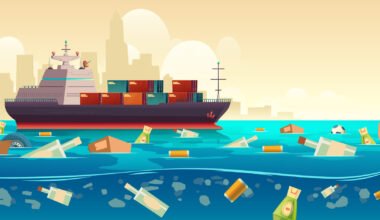Ever wonder how that shiny new car in your driveway is affecting the planet by releasing harmful emissions that pollute the environment? Turns out, in more ways than you realize. You already know that cars pollute the air we breathe, but they also contaminate the water we drink and the soil we grow our food in.
Your daily commute and errand-running are doing far more environmental harm than you probably expect. The impacts go well beyond the obvious tailpipe emissions and gas guzzling. From the materials used to build the vehicle to the waste produced when it’s junked, cars are polluting at every stage of their lifecycle.
Read on to discover the surprising ways your trusty set of wheels is damaging the Earth. Here are just a few of the shocking ways cars pollute the air, water and soil:

How Exhaust Emissions Pollute the Air?
Your vehicle’s exhaust pipe doesn’t just emit carbon dioxide. Unfortunately, it releases a toxic cocktail of air pollutants that harm the environment and public health.
Hydrocarbons and Nitrogen Oxides
- The combustion of gasoline and diesel in engines produces hydrocarbons like benzene, as well as nitrogen oxides (NOx) like nitrous oxide and nitrogen dioxide. These chemicals react with sunlight to form ozone, a dangerous air pollutant. Ozone irritates the lungs, triggers asthma attacks and makes people more susceptible to respiratory infections.
Particulate Matter
- Vehicles also generate particulate matter (PM) – tiny particles suspended in the air. Diesel engines, especially older ones, are major emitters of PM 2.5, particles smaller than 2.5 microns that penetrate deep into the lungs. Exposure to PM 2.5 has been linked to increased respiratory disease, heart attacks, and premature death.
Carbon Monoxide
- This colorless, odorless gas is produced by the incomplete combustion of fuel in gasoline and diesel engines. It interferes with the blood’s ability to carry oxygen, which can lead to headaches, dizziness and impaired thinking ability. At high concentrations, carbon monoxide is lethal.
Gasoline and Oil Leaks Contaminating Soil and Water
Gasoline and motor oil are essential for powering and lubricating your vehicle, but they also pose major threats to the environment if spilled or leaked. These petroleum products seep into the soil and contaminate groundwater supplies, harming ecosystems for years.
Gasoline
- When gasoline drips or spills onto the ground, the toxic chemicals it contains—like benzene, toluene, and xylenes—seep into the soil and eventually into groundwater aquifers. Even a small spill of just a gallon of gasoline can pollute up to 750,000 gallons of water. The carcinogenic compounds in gasoline have been linked to cancer and other health issues in humans.
Motor Oil
- The motor oil in your car contains heavy metals like lead, chromium, and cadmium which are poisonous to plants, animals, and humans. When oil leaks from your engine or is spilled during oil changes, these metals seep into the soil and contaminate waterways. A single quart of motor oil can pollute up to 2 million gallons of water. The petroleum in motor oil also releases hydrocarbons that harm grass, trees, and other plants.
The Environmental Impact of Vehicle-Related Particulate Pollution
Every time you press the brakes in your vehicle or drive it down the road, various components contribute to the release of particles that pollute the air, water, and soil. This particulate pollution poses environmental concerns and affects both urban and natural settings. Understanding the sources of these particles and taking proactive steps can help mitigate their harmful effects.
Brake Dust and Tire Wear
When you apply the brakes in your vehicle, the brake pads grind against the brake rotors, generating brake dust. This dust consists of tiny particles containing heavy metals such as copper, lead, and zinc. Brake dust can become airborne or wash into local waterways, significantly contributing to the copper and zinc found in urban runoff, which pollutes streams and rivers.
Additionally, your vehicle’s tires gradually wear down as you drive, releasing tiny rubber particles into the environment. These particles, a significant source of microplastic pollution in the oceans, also leach chemicals like zinc into aquatic ecosystems, posing a threat to aquatic life.
To address these issues, consider the following practices:
- Brake Dust and Tire Wear Management: Frequent washing and the application of brake dust-resistant wheel coatings can help limit the spread of brake dust into the environment. Choosing less-toxic semi-metallic or ceramic brake pads can decrease the heavy metal content in the dust. Maintain your tires properly by keeping them adequately inflated and avoiding aggressive driving habits to maximize their lifespan.
- Sustainable Choices: When it’s time to replace your tires, opt for options made from recycled and more sustainable materials to reduce the environmental impact of tire wear.
Vehicle-Related Microplastics
Microplastics, defined as plastic particles smaller than 5 mm in size, are pervasive environmental pollutants. Surprisingly, vehicles contribute to the release of microplastics through various mechanisms:
- Tire Wear: As your vehicle’s tires roll down the road, they shed small pieces of rubber and plastic, releasing microplastics into the environment. A single tire can release over 60,000 particles per mile driven. These microplastics end up in waterways, accumulate in oceans, and even enter the air we breathe.
- Brake Pad Dust: Every time you use the brakes, the brake pads grind against the brake rotor, releasing dust that contains microplastics. This dust enters the air and washes off roads into storm drains and waterways, contributing to microplastic pollution. Some estimates attribute over 20% of ocean microplastics to brake pad dust.
- Fluids and Lubricants: Various automotive fluids and lubricants, including power steering fluid, brake fluid, and engine oil, contain plastics that break down over time due to heat and friction, releasing microplastics into the environment.
To minimize your contribution to vehicle-related microplastic pollution, consider the following actions:
- Proper Tire Maintenance: Keeping your tires properly inflated to the recommended pressure reduces wear and the release of microplastics.
- Eco-Friendly Brake Pads: Explore brake pad options made from natural, non-plastic materials to reduce the release of microplastics.
- Responsible Fluid Management: Ensure that used automotive fluids are properly recycled according to the guidelines provided by your local waste and recycling department.
By adopting these practices, you can play a role in reducing the environmental impact of vehicle-related particulate pollution and microplastic contamination.
The Effects of Paved Roads and Parking Lots
Paved roads and parking lots may seem harmless, but they actually have significant environmental impacts.
Runoff Pollution
- When rain falls on impervious surfaces like pavement, the water cannot soak into the ground. Instead, it runs off into nearby storm drains, streams, and rivers. This runoff carries pollutants like motor oil, grease, heavy metals like lead and zinc, and nutrients like nitrogen and phosphorus into waterways. These pollutants poison aquatic ecosystems, killing fish and other wildlife.
Changes in Water Flow
- Paved areas prevent rain from soaking into the ground, altering natural water flow. This can lead to increased flooding as water rapidly accumulates and runs off. At the same time, less water is available to recharge aquifers and groundwater during dry periods. Many communities are now limiting the percentage of land that can be covered by impervious surfaces.
Heat Islands
- Dark, paved surfaces absorb and retain heat from the sun. This effect, known as the urban heat island effect, causes cities and suburbs to become significantly warmer than surrounding rural areas. The excess heat requires more energy use for cooling and can lead to heat-related health issues. Using more reflective and porous pavements, planting shade trees, and creating green spaces are some solutions cities are implementing to mitigate heat islands.
Loss of Habitat
- Any time land is paved over, habitat for plants, animals, and microorganisms is lost. While a small parking lot may not seem to make a big impact, the cumulative effect of development can destroy significant habitat over time. Choosing more compact building designs, redeveloping existing built-up areas, and protecting open space are important for conservation.
Resource Extraction and Manufacturing Processes
The production and manufacturing of vehicles has a huge environmental impact that extends far beyond the pollution from driving them. From the extraction of raw materials to the assembly of parts, the life cycle of a car contributes significantly to pollution, resource depletion, and habitat destruction.
Mining and Materials Processing
- The metals and materials used in vehicles have to come from somewhere. Mining operations required to extract iron ore, aluminum, and precious metals like copper, gold, and platinum destroy landscapes, pollute the air and water, and deplete natural resources. Smelting and processing the ores into usable metals also requires massive amounts of energy and creates toxic byproducts.
Deforestation
- Rainforests and other forests around the world are being cleared at an alarming rate to produce materials for vehicles like rubber, palm oil, and wood products. Entire ecosystems are destroyed in the process, resulting in habitat loss for wildlife and increased carbon dioxide emissions. The manufacture of just one tire requires immense amounts of land, water, and fossil fuels.
Assembly Line Pollution
- Vehicle assembly plants generate an incredible amount of waste, much of which ends up in landfills, incinerators, and the environment. Paints, adhesives, solvents and other chemicals used in the manufacturing process pollute the air and water. Massive amounts of energy are also needed to power the assembly lines and all their equipment.
Transporting Parts
- The various components and raw materials needed to produce a vehicle have to be transported from all over the world, which requires the burning of massive amounts of fossil fuels to power ships, trains, and trucks. This produces greenhouse gas emissions, particulate matter, and other pollutants that negatively impact the environment and public health.
While driving an electric vehicle can help reduce emissions and pollution once it’s on the road, the total lifetime environmental impact depends heavily on how sustainably and ethically it was manufactured. Significant improvements in efficiency, renewable energy use, and waste reduction in the vehicle production process will be needed to truly build an eco-friendly car. Reducing overall consumption and transitioning to more sustainable forms of transportation can have an even bigger impact.
The Carbon Footprint of Automobile Transportation
The entire lifecycle of a vehicle—from manufacturing to operation to disposal—generates a sizable carbon footprint that contributes to climate change.
Vehicle Manufacturing
- Producing a new car requires an enormous amount of energy, raw materials, and manufacturing. This results in CO2 emissions from the factories and transportation of parts. The manufacturing of a single car produces over 15 tons of CO2 on average. Multiply that by over 92 million vehicles manufactured worldwide each year, and vehicle production accounts for a significant source of greenhouse gas emissions.
Fuel Refining and Distribution
- The gasoline and diesel needed to power vehicles also requires oil drilling, refining, and transportation – all of which generate pollution. Refining a gallon of gasoline produces over 20 pounds of CO2. Distributing fuel to gas stations and transporting it around the country in tanker trucks and pipelines results in even more emissions. According to the EPA, fuel refining and distribution accounts for about 10% of total U.S. CO2 emissions.
Vehicle Operation
- Once a vehicle is manufactured and fueled, the pollution continues through its operation. The combustion of gasoline in a vehicle’s engine produces CO2, nitrogen oxides, carbon monoxide, particulate matter, and other smog-forming emissions that pollute the air and contribute to health issues like asthma or lung disease. The average vehicle emits over 4 tons of CO2 per year just from driving. Collectively, on-road vehicles produce over 1.5 billion tons of CO2 annually in the U.S., representing about 29% of the country’s total emissions.
Vehicle Disposal
- When a vehicle reaches the end of its lifespan, it still has an environmental impact. Vehicle disposal in landfills releases chemicals as the materials break down over time. If the vehicle is recycled, the recycling process requires energy and resources and generates more emissions. Proper vehicle recycling and remanufacturing can reduce the carbon footprint of disposal, but there is still room for improvement to minimize the environmental impact.
In all stages of a vehicle’s lifecycle, there are opportunities for reducing emissions and transitioning to more sustainable transportation. More efficient vehicles, alternative fuels, improved recycling, and greener manufacturing processes can all help minimize the carbon footprint of automobiles. But making a difference starts with the choices we make as consumers and how we choose to get around.
Conclusion
You may think your trusty vehicle is only emitting carbon dioxide, but vehicles pollute the environment in many surprising ways beyond just greenhouse gasses. From the mining of raw materials to make car parts to the disposal of used vehicles, the entire lifecycle of a car pollutes the air, water and soil.
As an owner and driver, there are steps you can take to reduce your impact like properly maintaining your car, driving less, and properly disposing of used motor oil and other fluids. We all want the convenience of driving, but it’s time we recognize the true cost to the planet and make changes to build a sustainable transportation system for future generations.
The next time you get behind the wheel, consider your impact and do your part to make a difference. Our environment will thank you for it.








